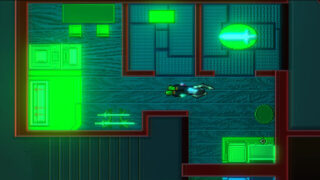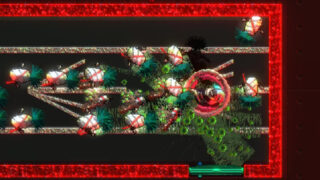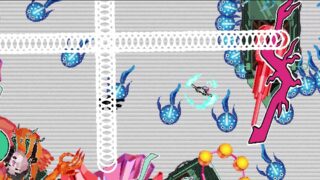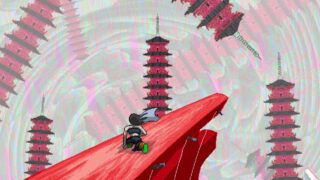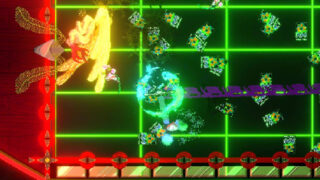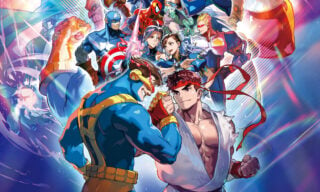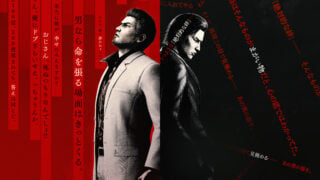Here’s yer man giving out the VGC Media Award at @BitSummit. Expect a full article on VGC tomorrow explaining why Sonokuni was my game of the show. pic.twitter.com/cMDPnOIhHh
— Chris Scullion @ BitSummit, Japan (@scully1888) July 21, 2024
VGC’s BitSummit Game of the Show is Sonokuni, a J-Hip-Hop gem inspired by Hotline Miami
Don Yasa Crew’s gaming debut caught our eye – and our ears

During this year’s BitSummit event, I interviewed three of the original developers behind the Chibi-Robo series, including composer Hirofumi Taniguchi.
I asked Taniguchi how he was approaching the composition of his soundtrack for koROBO, the team’s new robot game that definitely, honestly has nothing to do with Chibi-Robo.
Taniguchi told me that although music technology had improved in the nearly two decades since Chibi-Robo, and although his own abilities as a musician had developed, he deliberately decided to pare back the koROBO soundtrack and provide something simpler and gentler.
“Sometimes simple is better,” he said. And I immediately thought of Sonokuni.
It certainly wasn’t the first time I had thought of Sonokuni since I’d played it on the first day of BitSummit, and it was to be far from the last. Although at first glance, the game may not appear particularly groundbreaking, it’s been on my mind since the pay session ended.
Sonokuni is published by Kakehashi Games, but it’s the developer that’s the real story here. Don Yasa Crew is a Japanese hip-hop outfit that’s more used to dropping new beats than new builds, but Sonokuni is its attempt at making a video game that makes use of its music.
I briefly spoke to Don Sagawa, who was representing the crew at BitSummit, who told me the game was initially inspired by Hotline Miami, and the top-down viewpoint makes that quite clear. It doesn’t play the same, however.
The main principle of Sonokuni appears to be trial and error, as players learn the best way to clear each area. The section we played consisted of a large map filled with small rooms, each containing a number of enemies. Once you enter a room, the door to the next one can’t be accessed until every enemy is defeated.
Your basic sword slash is enough to kill most enemies with one hit, but they don’t all just stand there and give you a free shot. Every enemy has to be beaten using a different technique, and you have a few other tricks up your sleeve to deal with them.
Some enemies have to be killed within a certain time, or they’ll instantly kill you with a perfect shot, so these are the priority. Standing in the way may be standard enemies who can just be slashed, or green enemies who dash at you at lightning speed. These are avoided by holding down a trigger to briefly slow down time, allowing you to sidestep them then hit them while they recover.
Then there are enemies who fire blue shots at you, which have to be absorbed by your shield before you can approach. Others red shots at you – if you approach them they’ll block your sword and kill you every time, so you have to use the sword to hit their red shots back at them to kill them.
It’s nothing revolutionary, but when you enter a room and there are something like seven or eight enemies, all of a mix of these types, you’ll get wiped out almost instantly. It’s too much to cope with all at once.
Then you stop and think. “Well, when I enter the room, the normal enemy comes at me, so I’ll take him out first”. So you do that, and as you do, one of those fast green ones zips over to you and kills you.
So you try again, killing the normal enemy, then quickly hitting slo-mo to side-step the green one. But as you chase him down while he’s stunned, you’re hit by a blue bullet. So now you need to take all this into account.
Finally, on your seventh or eighth attempt at a perfect path through the room, you kill all the enemies… only to realise there was a time-sensitive one in the corner who kills you instantly. Then you have to rethink your entire strategy, knowing you have to move towards that enemy first.
This may sound infuriating, but the combat is so satisfying, and the game is so conscious of the player’s free time that it never really is. As soon as you die you hit a button and spawn right at the door to the room, there are no long checkpoints you have to play through again. It’s a die, try, die, try system and it nails the ‘one more go’ vibe with gusto.
Then, on top of all this, there’s the small matter of a filthy, gritty J-hip-hop soundtrack blasting on loop in the background.
When it all combines, and you finally manage to pull off a perfect run with the bass thumping and Japanese rapping ringing around your ears, you feel cool as all imaginable hell.
“When it all combines and you finally manage to pull off a perfect run with the bass thumping and Japanese rapping ringing around your ears, you feel cool as all imaginable hell.”
Indeed, not only did the game win the VGC Media Highlight award at BitSummit (essentially the physical version of this article), it also picked up the Excellence in Sound Design Award, which was decided by a completely separate party. So it wasn’t just me!
There were much better looking games at BitSummit this year (Goodbye Seoul was beautiful, and a very close runner-up for our Game of the Show). There were games that had more original mechanics and tried to do something that had never been seen before in a game. I enjoyed every single one of the 30 or 40 games I played over the entire three-day period.
But sometimes, as Chibi-Robo’s composer put it to me, simple is better. And as I walked away from the event’s venue after its third and final day, it was Don Yasa Crew’s game that continued to linger in my mind, and may continue to do so until the full game is out later this year.

